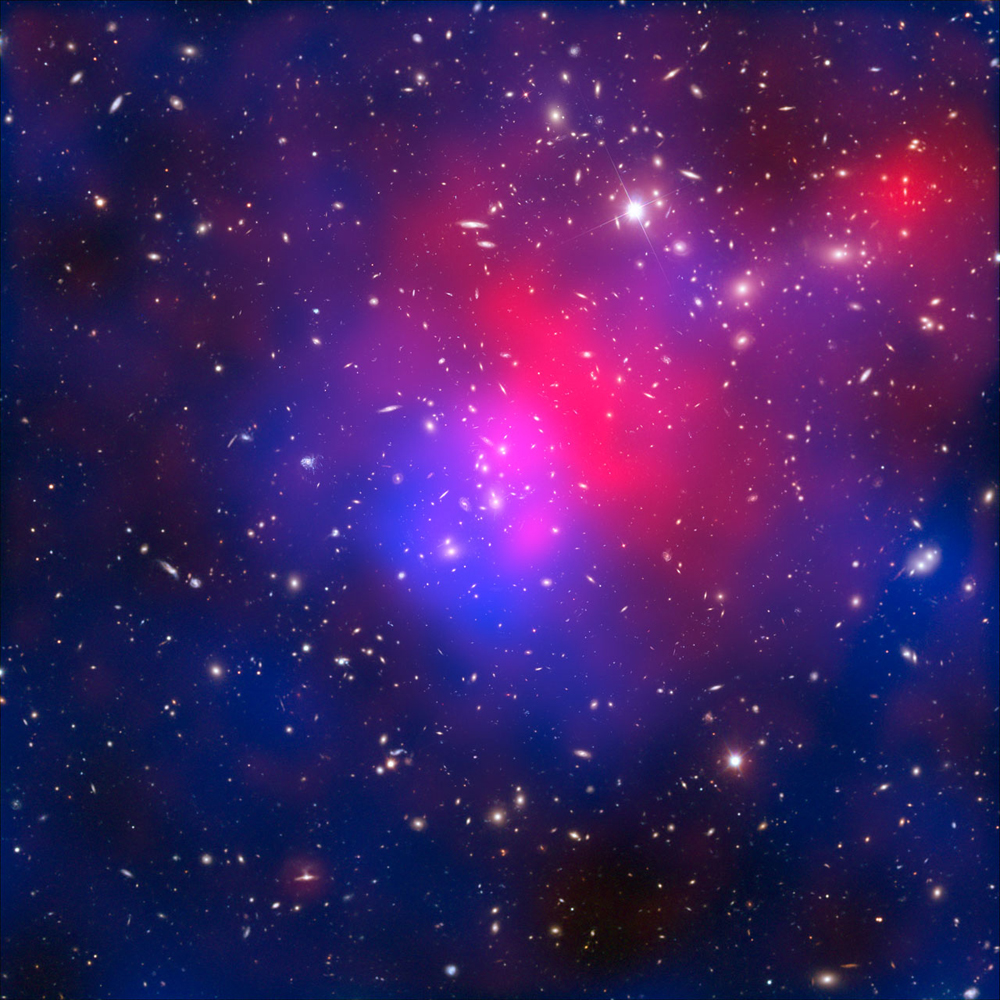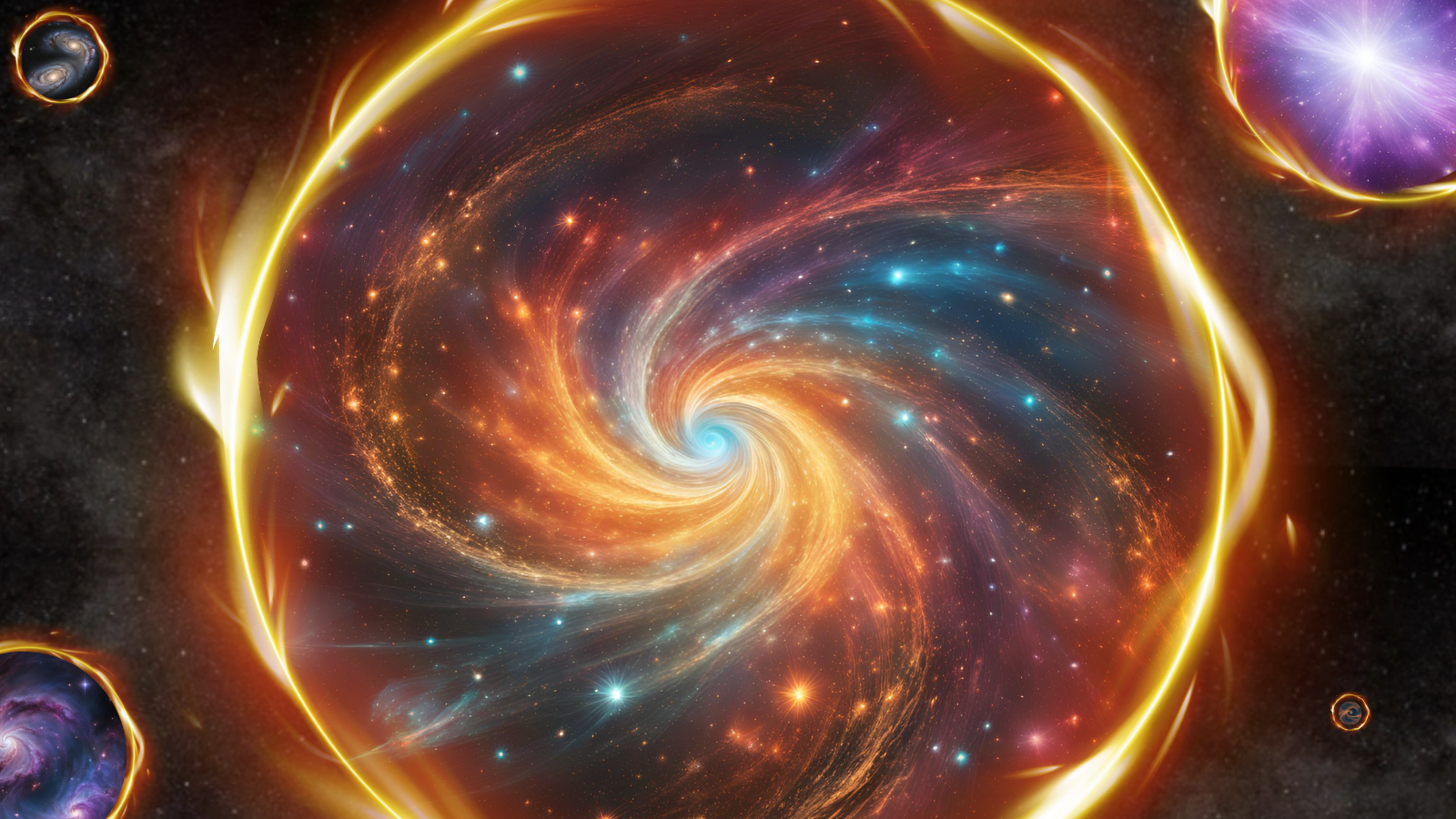Proof Is in the Cosmos: Einstein's General Relativity Confirmed

Albert Einstein wins again. His general theory of relativity has proved accurate in predicting how light travels from some of the most distant galaxy clusters in the universe, according to new measurements.
However, the findings still do not disprove an alternative theory of gravity invented to undo the need for dark energy, which is thought to be causing the accelerated expansion of the universe.
The new findings come from a study of light from hundreds of thousands of distant galaxies. General relativity predicts that the wavelength of this light will be shifted by a small amount due to the galaxies' mass, in an effect called gravitational redshift.
The effect is very difficult to measure, because it is the smallest of the three types of redshift, with redshift also being caused by the movement of the galaxies and the expansion of the universe as a whole. To disentangle the three sources of redshift, the researchers relied on the vast number of galaxies in the Sloan Digital Sky Survey sample, which allowed them to perform a statistical analysis. [Twisted Physics: 7 Mind-Blowing Findings]
The amount of redshift they found that appeared to be caused by gravity agreed exactly with the predictions of general relativity.
"We have independent measurements of the cluster masses, so we can calculate what the expectation for gravitational redshift based on general relativity is," said University of Copenhagen astrophysicist Rados?aw Wojtak. "It agrees exactly with the measurements of this effect."
Wojtak is lead author of a paper reporting the results in tomorrow's (Sept. 29) issue of the journal Nature.
Breaking space news, the latest updates on rocket launches, skywatching events and more!
Warped space-time
General relativity, proposed by Einstein in 1916, revolutionized the way physicists think about space and time. Specifically, it united the two concepts, which were thought to be independent, into one entity. And mass, Einstein showed, affects space-time profoundly, by warping it.
Where you have a large mass like a galaxy cluster, there is strong gravity and space-time is severely warped, causing time to move more quickly. Light emitted in this environment will have a certain frequency, which is related to the time scale (or the gravity strength) of the environment. When that light travels to a new environment, say to a telescope on Earth, where there is comparatively lower gravity, and time moves more slowly, the light's frequency will decrease. A decreased frequency is equivalent to a longer, or redder, wavelength. This is gravitational redshift.
It took physicists 43 years to detect evidence of gravitational redshift. This discovery came in 1959, when researchers measured the gravitational redshift in gamma-ray light emitted in a lab here on Earth.
"This was a groundbreaking experiment," Wojtak said.
Other studies confirmed the effect in the sun and in small nearby stars called white dwarfs. Yet no one had managed to detect a proof of this prediction of general relativity on the cosmic scale, until now.
"In our work we present for the first time the same effect but on a scale which is many orders of magnitude larger," Wojtak told LiveScience. "This is the only general relativistic effect which has been observed and confirmed locally on the Earth and on the scale corresponding to the universe. We have a link between our local scale of the Earth and galaxy clusters."
Alternative theories
The findings further support the already well-entrenched general theory of relativity, which has been successful in predicting many cosmic phenomena observed throughout the universe.
Yet there are still competing theories that have been proposed in recent years to accommodate the strange discovery that the universe seems to contain much more mass than simply the visible matter we can see, and that the cosmos seems to be accelerating in its expansion, propelled by an unknown force.
Within the framework of general relativity, scientists have invented concepts called dark matter and dark energy, respectively, to deal with these problems. But some researchers say these bizarre inventions aren't necessary if we simply tweak general relativity itself.
One such competing theory is called the f(R) theory. This model, too, agrees with Wojtak and his colleagues' new measurements. However, another alternative theory, called Tensor–vector–scalar gravity (TeVeS), does conflict with the new findings. To preserve the theory, physicists would have to make some changes. [Video: Dark Matter in 3-D]
Ultimately, as more data is gathered about distant galaxies, such cosmic measurements should become even more accurate, and physicists may be able to distinguish better between the competing models.
"Discussions of gravity's properties will continue, but Wojtak and colleagues' pioneering work gives a glimpse of the potential of new cosmological tests for achieving higher precision when millions of galaxy redshifts, from which gravitational redshifts can be extracted, become available in the future," physicist Gary Wegner of Dartmouth College in New Hampshire, who was not involved in the new research, wrote in an accompanying essay in the same issue of Nature.
You can follow LiveScience senior writer Clara Moskowitz on Twitter @ClaraMoskowitz.Follow LiveScience for the latest in science news and discoveries on Twitter @livescience and on Facebook.
Join our Space Forums to keep talking space on the latest missions, night sky and more! And if you have a news tip, correction or comment, let us know at: community@space.com.

Clara Moskowitz is a science and space writer who joined the Space.com team in 2008 and served as Assistant Managing Editor from 2011 to 2013. Clara has a bachelor's degree in astronomy and physics from Wesleyan University, and a graduate certificate in science writing from the University of California, Santa Cruz. She covers everything from astronomy to human spaceflight and once aced a NASTAR suborbital spaceflight training program for space missions. Clara is currently Associate Editor of Scientific American. To see her latest project is, follow Clara on Twitter.

